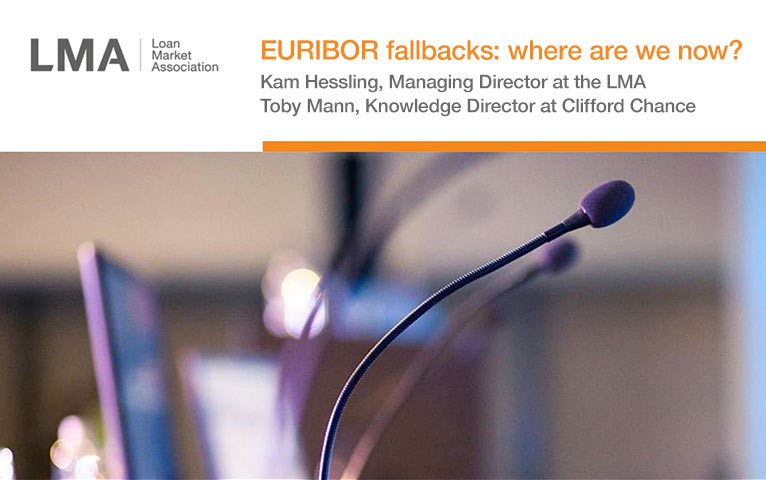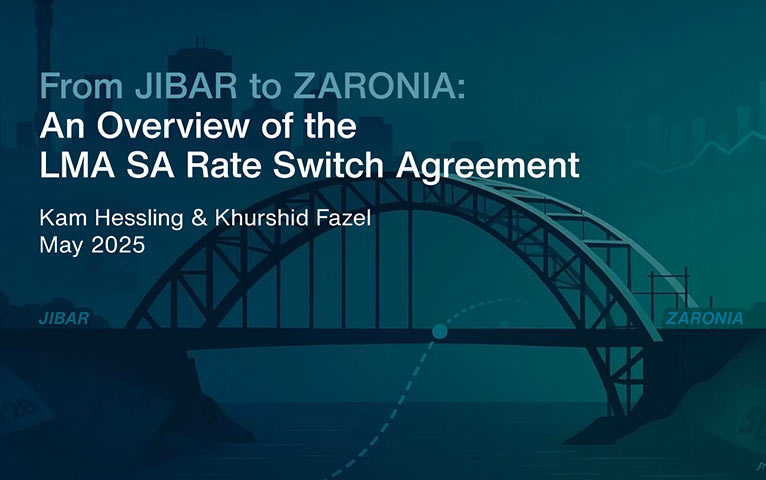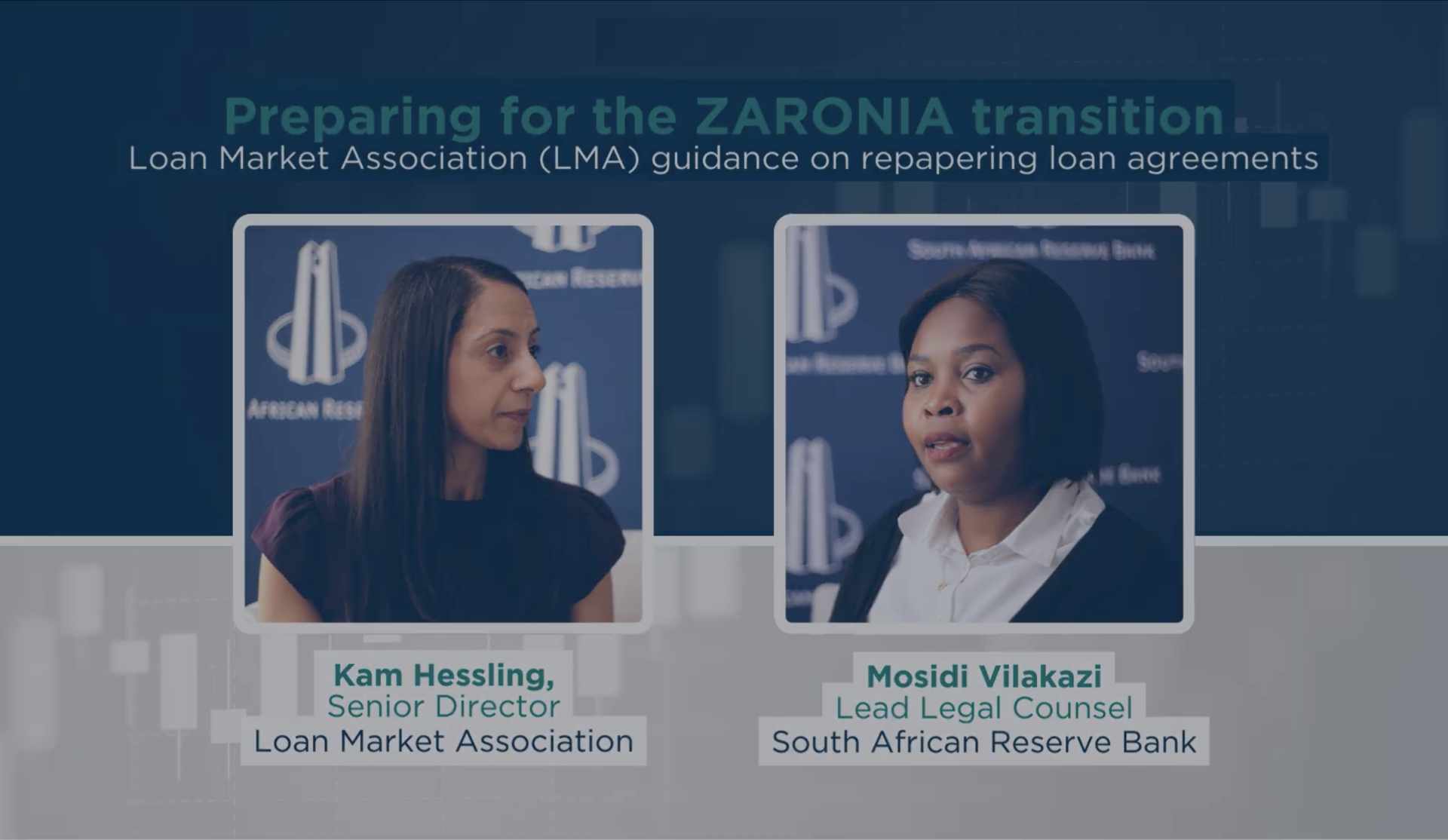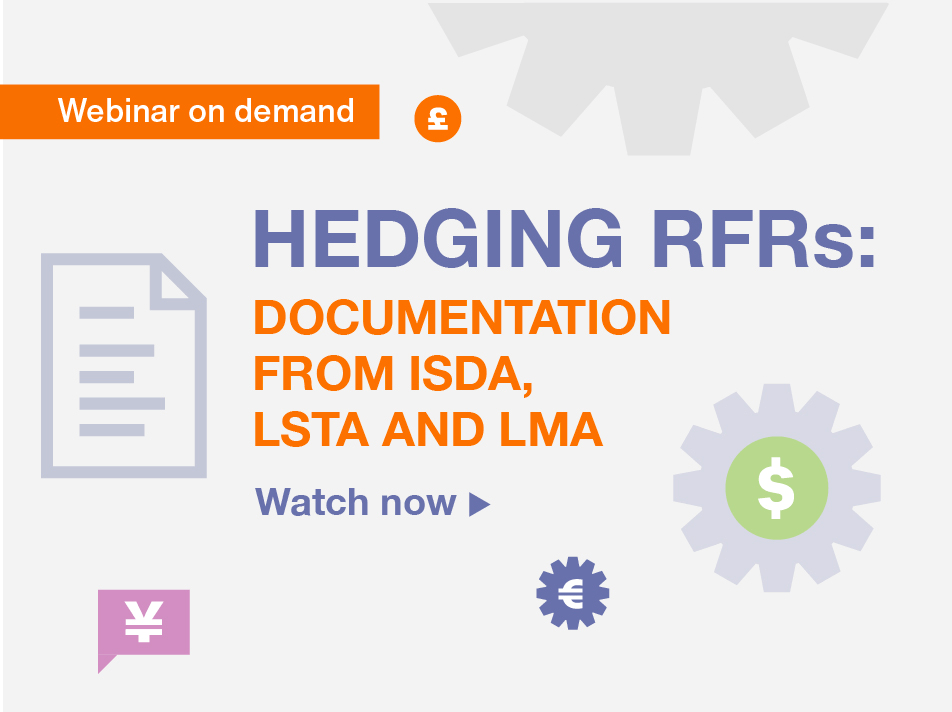
IBOR Transition
LIBOR is an interest rate benchmark which has been phased out. No new loan facilities are able to use LIBOR. As of 1 October 2024, there are no remaining LIBOR settings being published. There is still some ongoing work on the transition of legacy LIBOR facilities and there is work to do in transitioning IBORs in a number of currencies and strengthening fallbacks to remaining IBORs (namely EURIBOR). The LMA continues to work with the market, other trade associations and the regulators on RFR transition and will continue to keep the market updated through this microsite as well as regular blogs.
Latest News
LMA publishes day one ZARONIA agreement and updates SA rate switch agreement to recommended form
To further support the market’s transition from JIBAR to ZARONIA, the LMA is pleased to have published three key documents:
- Exposure draft day one ZARONIA facility agreement (with comments due by 30 January 2026)
- Recommended form SA rate switch agreement (unsecured)
- Recommended form SA rate switch agreement (secured)
An updated commentary on the interest rate provisions in these documents will be made available shortly.
South Africa - JIBAR to cease from 1 January 2027
The South African Reserve Bank (SARB) has announced that the Johannesburg Interbank Average Rate (JIBAR) will be permanently discontinued after its final publication on 31 December 2026. ZARONIA is the designated preferred successor rate.
Market participants are urged to accelerate transition efforts, update contracts, reduce reliance on JIBAR and ensure operational readiness for ZARONIA.
The LMA continues to support the market in the transition and will shortly be publishing a day one ZARONIA facility agreement.
For full details, please read the SARB Announcement
SA MPG requests proposals to calculate and publish forward-looking term rates based on ZARONIA
On 20 October 2025, the MPG announced that it is seeking a qualified vendor to calculate and publish forward-looking term rates based on ZARONIA. The selected administrator will be expected to begin publishing an MPG-recommended forward-looking ZARONIA term rate by the second quarter of 2026, contingent on sufficient liquidity in ZARONIA derivatives markets, as well as establishing recommended scopes of use for such term rates.
Submissions are due by 30 November 2025.




